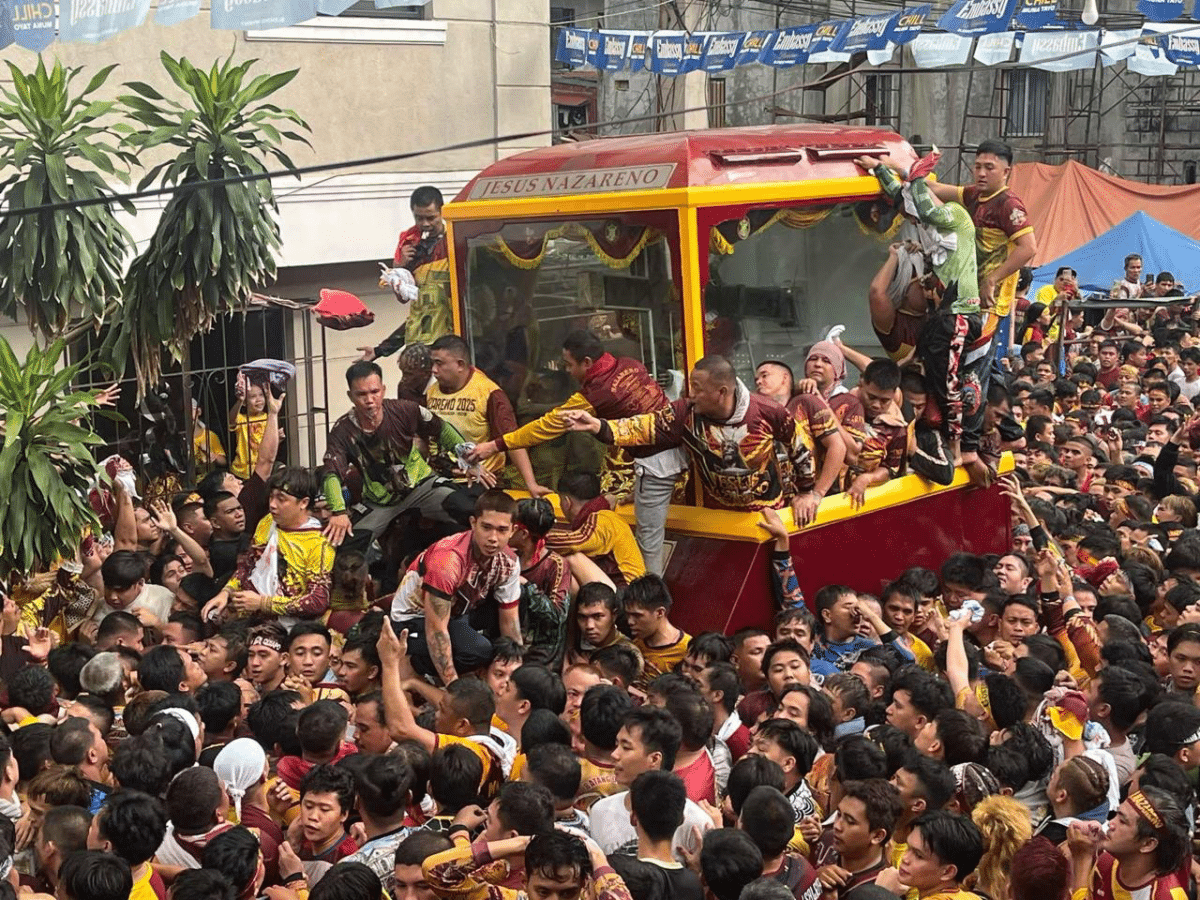Traslacion 2025 is longest since 2020

Photo by Faye Orellana
MANILA, Philippines — As the streets of Quiapo turned into an ocean of maroon and yellow for the Feast of Jesus Nazareno, this year’s Traslacion marked the longest procession since 2020, taking a total of 20 hours and 45 minutes.
The Traslacion is an annual procession where devotees commemorate the transfer of the ebony image of Nazareno to the Minor Basilica and National Shrine of Jesus Nazareno, more commonly known as the Quiapo Church. It serves as one of the world’s biggest displays of religious devotion.
While the duration of the procession has been on a downtrend since 2019 (excluding 2021 to 2023 due to the COVID-19 pandemic), this year’s Traslacion broke the trend, ending at over 20 hours which is significantly higher than the 2020s 16 hours and 36 minutes, as well as 2024’s 14 hours and 59 minutes.
This comes as somewhat of a surprise since the Quiapo Church previously said that it expected a lower number of devotees to participate in the Traslacion as parishes nationwide were also set to hold their masses and celebrations for the Nazareno.
But as it turns out, the estimated number of devotees who joined this year’s culmination of the Nazareno feast reached 8,124,050—significantly higher than 2024’s 6.5-million and 2019’s 4-million devotees.
Procession
This year’s Traslacion began at 4:41 a.m. on Thursday. It left the Quirino Grandstand to head towards the Quiapo Church through its designated route.
It arrived at the Minor Basilica of San Sebastian more than 12 hours later at 5:45 p.m., where devotees then witnessed the traditional “Dungaw,” which refers to the solemn meeting of the images of Our Lady of Mt. Carmel de San Sebastian and Jesus Nazareno.
The Nazareno image then finally arrived at Quiapo Church at 1:26 a.m. after a grueling procession.
Challenges
While the Quiapo Church as well as its Nazareno Command Center have yet to officially explain why this year’s Traslacion is significantly longer than previous years, the Church noted that the number of devotees suddenly increased around afternoon due to the good weather, as well as the number of devotees who can finally attend after finishing their respective jobs.
It was also revealed past 6 p.m. Thursday that both ropes used to pull the andas, or the carriage carrying the Nazareno image, snapped—the first one already snapping in the morning, while the other in the evening.
Due to this, the Hijos del Nazareno opted to just push the carriage, rather than wait for repairs just to pull it, as it would have made the procession much slower.
There were even several instances when the andas tilted to its side in the middle of the procession, especially as devotees continued to attempt to climb the carriage.
These instances may have been factors why this year’s procession was much slower than 2024 and 2020, apart from the fact that the number of devotees significantly increased.
READ: LIVE UPDATES: Feast of the Jesus Nazareno and Traslacion 2025